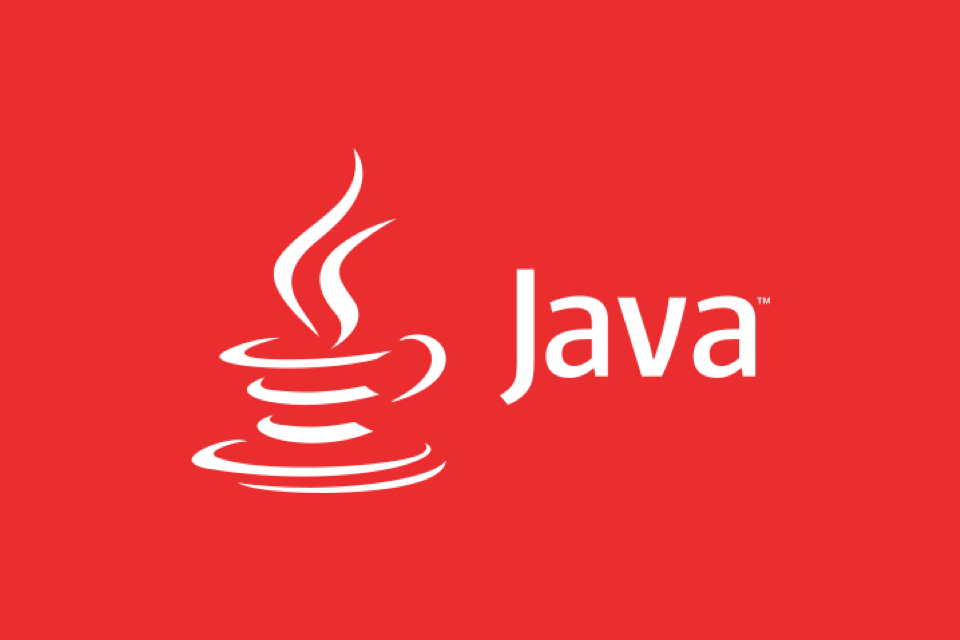What are common causes of memory leaks in Java applications?
Aug 01, 2025 am 06:03 AMStatic fields holding object references can prevent garbage collection; fix by using WeakHashMap or implementing eviction. 2. Improper use of listeners and callbacks may retain objects unnecessarily; fix by unregistering listeners or using weak references and static inner classes. 3. Unclosed resources like streams or connections hold native memory; fix by using try-with-resources for automatic cleanup. 4. Non-static inner classes keep references to outer instances, blocking garbage collection; fix by making them static or using WeakReference. 5. Caches without eviction grow indefinitely; fix by using managed cache libraries like Caffeine or Ehcache with size and time limits. 6. ThreadLocal variables can leak when threads are reused; fix by always calling remove() in a finally block. 7. ClassLoader leaks occur during redeployment if old class references persist; fix by avoiding static references and stopping application-created threads. To prevent leaks, avoid long-lived static collections, use weak references appropriately, clean up ThreadLocals, prefer static inner classes, close resources with try-with-resources, and monitor memory with tools like VisualVM or JProfiler, as Java memory leaks are often subtle and emerge over time under load.

Memory leaks in Java are less common than in languages without garbage collection, but they still happen—especially in long-running applications. Since the JVM automatically reclaims unused objects, memory leaks usually stem from unintentional object retention, where objects are still reachable and thus not garbage collected, even though they’re no longer needed.

Here are the most common causes:
1. Static Fields Holding Object References
Static fields live for the lifetime of the application unless explicitly cleared. If a static collection (like a List, Map, or cache) holds references to objects, those objects won’t be garbage collected—even if they’re no longer used.

public class Cache {
private static Map<String, Object> cache = new HashMap<>();
public static void addToCache(String key, Object value) {
cache.put(key, value); // Objects accumulate and never get removed
}
}?? Fix: Use WeakHashMap for caches when appropriate, or implement a cleanup strategy (e.g., time-based eviction).
2. Improper Use of Listeners and Callbacks
Event listeners (e.g., in GUI apps or observer patterns) are often registered but not unregistered. If the listener holds a reference to a large object (or if the listener itself is non-static inner class), it can prevent garbage collection.

button.addListener(new ActionListener() {
public void actionPerformed(ActionEvent e) {
// Anonymous inner class holds reference to enclosing instance
}
});?? Fix: Unregister listeners when no longer needed. Use weak references or make listeners static inner classes if they don’t need access to the outer instance.
3. Unclosed Resources (I/O, Streams, Connections)
While not always a direct memory leak, unclosed resources like InputStream, ResultSet, Socket, or Connection can hold native memory or internal buffers, leading to resource exhaustion and indirect memory pressure.
FileInputStream fis = new FileInputStream("file.txt");
// Forgot to close() — file handle and buffer stay allocated?? Fix: Always use try-with-resources:
try (FileInputStream fis = new FileInputStream("file.txt")) {
// auto-closed
}4. Inner Classes Holding Outer References
Non-static inner classes maintain a reference to their enclosing class instance. If the inner class object (e.g., a long-lived thread or timer task) outlives the outer object, it prevents the outer object from being collected.
public class Outer {
private int[] data = new int[1000000];
public void startTask() {
new Thread(new Runnable() {
public void run() {
// This Runnable holds a reference to 'Outer' instance
// Even if Outer is no longer needed, it can't be GC'd
}
}).start();
}
}?? Fix: Make the inner class static, or use WeakReference<Outer> if outer access is needed.
5. Caches Without Proper Eviction
Custom in-memory caches that grow indefinitely (e.g., storing user sessions or computed results) are a classic source of memory leaks.
?? Fix: Use cache libraries like Caffeine or Ehcache that support size limits, time-to-live (TTL), and weak/soft references.
6. ThreadLocal Variables
ThreadLocal variables are convenient for per-thread state, but they can leak memory—especially in environments with thread pooling (like web servers). If a thread is reused but the ThreadLocal isn’t cleared, the value stays in memory.
private static final ThreadLocal<MyObject> local = new ThreadLocal<>();
?? Fix: Always call remove() when done:
try {
local.set(someValue);
// ... do work
} finally {
local.remove(); // Critical!
}7. ClassLoader Leaks
In app servers or OSGi environments, redeploying an application without fully unloading old classes can cause ClassLoader leaks. This happens when classes loaded by the old ClassLoader are still referenced (e.g., via static fields, threads, or JNI).
?? Fix: Avoid static references to application classes. Ensure threads created by the app are stopped on undeploy.
Summary of Key Prevention Tips:
- Avoid long-lived static collections unless properly managed.
- Use weak references (
WeakHashMap,WeakReference) for caches or listeners. - Clean up
ThreadLocalvalues. - Prefer
staticinner classes to avoid accidental outer references. - Use try-with-resources for all closable resources.
- Monitor heap usage with tools like VisualVM, Eclipse MAT, or JProfiler.
Memory leaks in Java are often subtle and only show up under load or over time—so proactive design and monitoring are key.
The above is the detailed content of What are common causes of memory leaks in Java applications?. For more information, please follow other related articles on the PHP Chinese website!

Hot AI Tools

Undress AI Tool
Undress images for free

Undresser.AI Undress
AI-powered app for creating realistic nude photos

AI Clothes Remover
Online AI tool for removing clothes from photos.

Clothoff.io
AI clothes remover

Video Face Swap
Swap faces in any video effortlessly with our completely free AI face swap tool!

Hot Article

Hot Tools

Notepad++7.3.1
Easy-to-use and free code editor

SublimeText3 Chinese version
Chinese version, very easy to use

Zend Studio 13.0.1
Powerful PHP integrated development environment

Dreamweaver CS6
Visual web development tools

SublimeText3 Mac version
God-level code editing software (SublimeText3)
 VSCode settings.json location
Aug 01, 2025 am 06:12 AM
VSCode settings.json location
Aug 01, 2025 am 06:12 AM
The settings.json file is located in the user-level or workspace-level path and is used to customize VSCode settings. 1. User-level path: Windows is C:\Users\\AppData\Roaming\Code\User\settings.json, macOS is /Users//Library/ApplicationSupport/Code/User/settings.json, Linux is /home//.config/Code/User/settings.json; 2. Workspace-level path: .vscode/settings in the project root directory
 How to handle transactions in Java with JDBC?
Aug 02, 2025 pm 12:29 PM
How to handle transactions in Java with JDBC?
Aug 02, 2025 pm 12:29 PM
To correctly handle JDBC transactions, you must first turn off the automatic commit mode, then perform multiple operations, and finally commit or rollback according to the results; 1. Call conn.setAutoCommit(false) to start the transaction; 2. Execute multiple SQL operations, such as INSERT and UPDATE; 3. Call conn.commit() if all operations are successful, and call conn.rollback() if an exception occurs to ensure data consistency; at the same time, try-with-resources should be used to manage resources, properly handle exceptions and close connections to avoid connection leakage; in addition, it is recommended to use connection pools and set save points to achieve partial rollback, and keep transactions as short as possible to improve performance.
 python itertools combinations example
Jul 31, 2025 am 09:53 AM
python itertools combinations example
Jul 31, 2025 am 09:53 AM
itertools.combinations is used to generate all non-repetitive combinations (order irrelevant) that selects a specified number of elements from the iterable object. Its usage includes: 1. Select 2 element combinations from the list, such as ('A','B'), ('A','C'), etc., to avoid repeated order; 2. Take 3 character combinations of strings, such as "abc" and "abd", which are suitable for subsequence generation; 3. Find the combinations where the sum of two numbers is equal to the target value, such as 1 5=6, simplify the double loop logic; the difference between combinations and arrangement lies in whether the order is important, combinations regard AB and BA as the same, while permutations are regarded as different;
 Mastering Dependency Injection in Java with Spring and Guice
Aug 01, 2025 am 05:53 AM
Mastering Dependency Injection in Java with Spring and Guice
Aug 01, 2025 am 05:53 AM
DependencyInjection(DI)isadesignpatternwhereobjectsreceivedependenciesexternally,promotingloosecouplingandeasiertestingthroughconstructor,setter,orfieldinjection.2.SpringFrameworkusesannotationslike@Component,@Service,and@AutowiredwithJava-basedconfi
 python pytest fixture example
Jul 31, 2025 am 09:35 AM
python pytest fixture example
Jul 31, 2025 am 09:35 AM
fixture is a function used to provide preset environment or data for tests. 1. Use the @pytest.fixture decorator to define fixture; 2. Inject fixture in parameter form in the test function; 3. Execute setup before yield, and then teardown; 4. Control scope through scope parameters, such as function, module, etc.; 5. Place the shared fixture in conftest.py to achieve cross-file sharing, thereby improving the maintainability and reusability of tests.
 Troubleshooting Common Java `OutOfMemoryError` Scenarios
Jul 31, 2025 am 09:07 AM
Troubleshooting Common Java `OutOfMemoryError` Scenarios
Jul 31, 2025 am 09:07 AM
java.lang.OutOfMemoryError: Javaheapspace indicates insufficient heap memory, and needs to check the processing of large objects, memory leaks and heap settings, and locate and optimize the code through the heap dump analysis tool; 2. Metaspace errors are common in dynamic class generation or hot deployment due to excessive class metadata, and MaxMetaspaceSize should be restricted and class loading should be optimized; 3. Unabletocreatenewnativethread due to exhausting system thread resources, it is necessary to check the number of threads, use thread pools, and adjust the stack size; 4. GCoverheadlimitexceeded means that GC is frequent but has less recycling, and GC logs should be analyzed and optimized.
 How to work with Calendar in Java?
Aug 02, 2025 am 02:38 AM
How to work with Calendar in Java?
Aug 02, 2025 am 02:38 AM
Use classes in the java.time package to replace the old Date and Calendar classes; 2. Get the current date and time through LocalDate, LocalDateTime and LocalTime; 3. Create a specific date and time using the of() method; 4. Use the plus/minus method to immutably increase and decrease the time; 5. Use ZonedDateTime and ZoneId to process the time zone; 6. Format and parse date strings through DateTimeFormatter; 7. Use Instant to be compatible with the old date types when necessary; date processing in modern Java should give priority to using java.timeAPI, which provides clear, immutable and linear
 Understanding the Java Virtual Machine (JVM) Internals
Aug 01, 2025 am 06:31 AM
Understanding the Java Virtual Machine (JVM) Internals
Aug 01, 2025 am 06:31 AM
TheJVMenablesJava’s"writeonce,runanywhere"capabilitybyexecutingbytecodethroughfourmaincomponents:1.TheClassLoaderSubsystemloads,links,andinitializes.classfilesusingbootstrap,extension,andapplicationclassloaders,ensuringsecureandlazyclassloa






